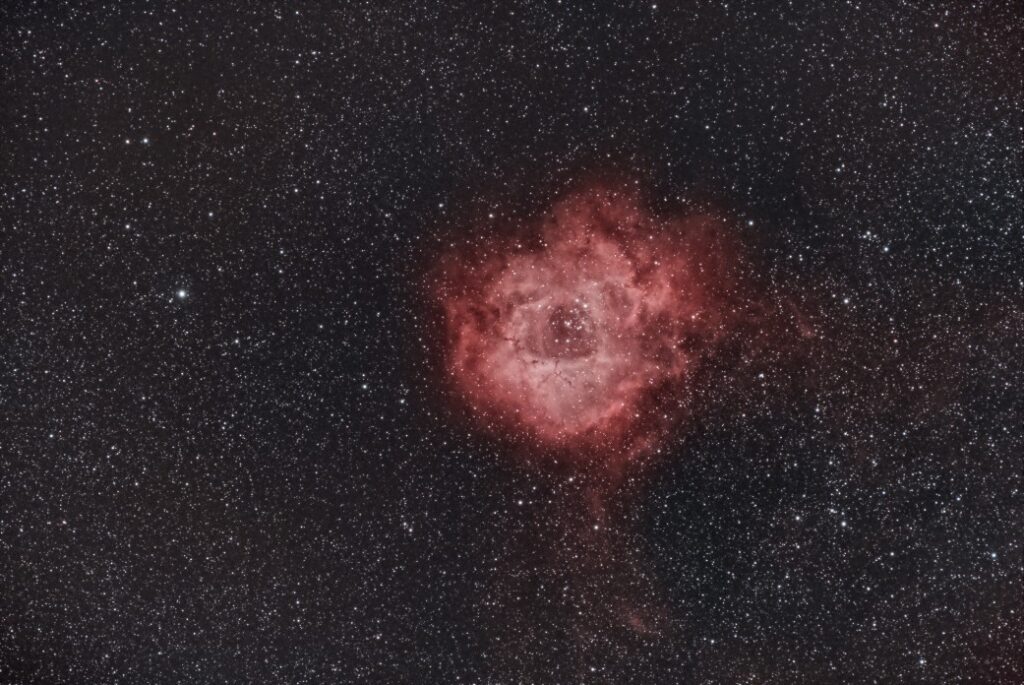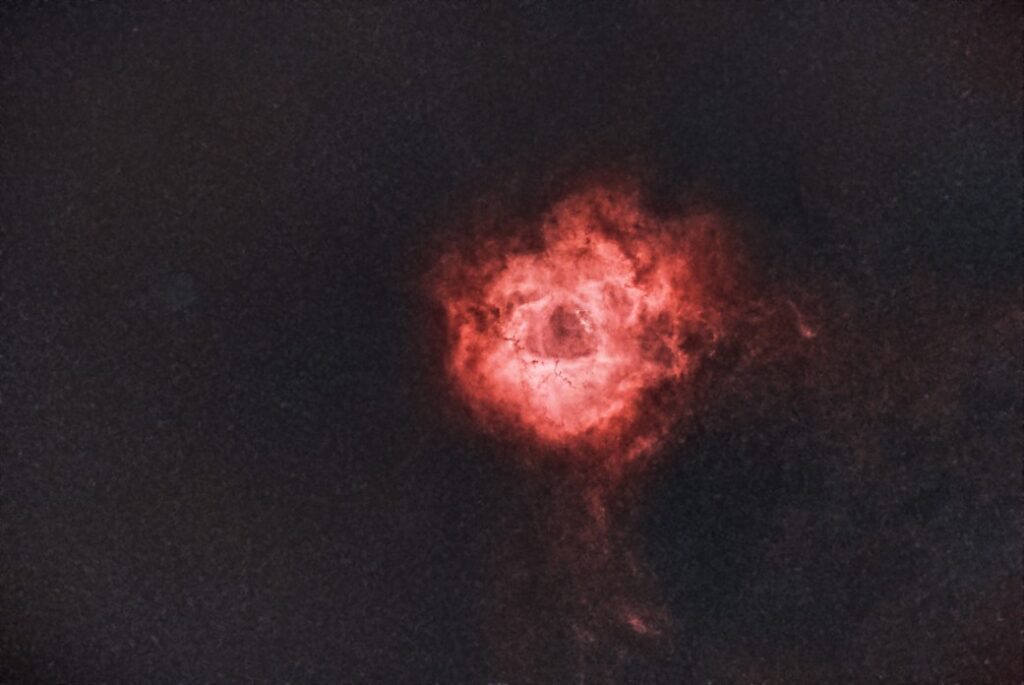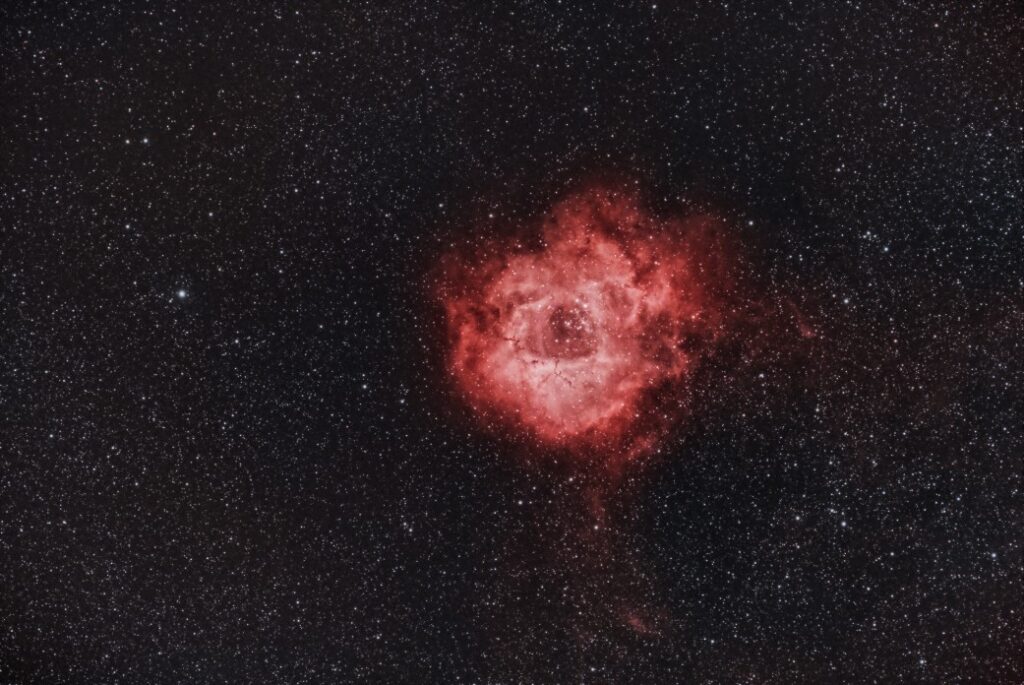 Science Daily: Uranus
Science Daily: Uranus
- New images reveal what Neptune and Uranus really look like January 5, 2024
- Ringing in the holidays with ringed planet Uranus December 19, 2023
 Science Daily: Pluto
Science Daily: Pluto
- How Pluto got its heart April 15, 2024
- Evidence of geothermal activity within icy dwarf planets February 15, 2024
 Science Daily: Kuiper Belt
Science Daily: Kuiper Belt
- How Pluto got its heart April 15, 2024
- Evidence of geothermal activity within icy dwarf planets February 15, 2024
One of the wonderful problems that has become more apparent with digital imaging with modern optics is high quality images with lots of stars. Back the dark(room) ages with film, it seemed that most images didn’t really pick up that many of the fainter stars. I can make up some really smart sounding reason for why that was (maybe not enough light to activate the film since non-linear film has an activation threshold), but the truth is, I have no idea nor have ever done any real analysis or comparison. But I certainly do capture a lot of stars with my digital cameras. As in, OMG I had no idea that blank area of the sky had so many stars.
This is a problem. Because quite often the stars actually distract from the overall image. And that’s where the choices come in.
First of all, there are always choices in the details. How much to increase saturation, how much to tweak the curves adjustment to enhance the contrast, how to smooth/filter the noise, etc. Which begs the question everyone always asks: is that really what it looks like?
The short answer is “no” but not for the reasons you might think. First, all those cool sci-fi pictures of galaxies/nebulae in the window of a spaceship are seriously not real. That’s because the surface brightness of all those things is too low and our eyes can’t pick up the colors or even much of the light. Sorry, they’re cool effects, but they’re not real either.
The longer answer is “yes, but….” The image is not fake, but it has been enhanced to bring out details we can’t pick out given the eyes nature has given us. Sometimes, what we’re doing is trying to capture the impression we get when we look through the eyepiece of a telescope. The eye and brain are very sensitive and can pick out detail that is quite subtle. The camera doesn’t come with a brain and it just shows you a photon intensity map. If you ever pulled out your camera and took a picture of a gorgeous moon then looked at the picture and thought “WTH?” then you should realize that.
When processing an image, most of the steps involve mathematical transformations/operations that are not at all arbitrary, though there is room for creativity in the sense that I can tweak the parameters used. When looking at the digital noise in an image, how much do I want to average over adjacent pixels to remove/smooth over the random variation of the sensor from pixel-to-pixel? Can I sharpen the image to bring out the detail? Can I adjust the contrast to things that are really there, just not quite visible the human eye? The answer to all of those questions is, of course, yes you can. The artistry is knowing when to stop.
And back to those stars…. What the camera records is all those stars. And sometimes they steal the show when the real, ahem, star is actually not a star. In the recent picture of NGC 2238 (the Rosette Nebula), the nebula is in a rich star field. Enough so that it is distracting and takes away from the gaseous nebula itself. If only you could somehow “dial down” the stars to focus on the nebula itself. Turns out you can.
All of these are the same image. Just processed differently. Here’s the starting point (well, not really, this is after a lot of processing).






So… there’s nothing truly fake about any of those images. But it’s also true that what you see in the image is not what you would see in the night sky. And that doesn’t even get started on wavelength sensitivity. Cameras and eye’s don’t really convert colors the same and then your computer monitor doesn’t even emit the right wavelength of red to match what he cameras originally detected.
The bottom line is that astronomy pictures are a bit of science and a bit of art, crafted to satisfy the imager (me). Well, that’s not quite true. I’m never quite satisfied with the outcome. But now that I know what I could get out of this field, I’m ready to go back and try again.
Written by Roland Roberts
Search
.Archives
- May 2024 (1)
- April 2024 (3)
- September 2022 (5)
- April 2022 (1)
- January 2022 (3)
- December 2021 (4)
- September 2021 (3)
- July 2021 (1)
- January 2021 (1)
- November 2020 (2)
- October 2020 (2)
- September 2020 (2)
- August 2020 (5)
- July 2020 (1)
- November 2019 (2)
- September 2019 (1)
- August 2019 (2)
- September 2017 (1)
- August 2017 (1)
- September 2015 (3)
- August 2015 (2)
- June 2015 (5)
- May 2015 (3)
- May 2013 (2)
- January 2013 (1)
- December 2012 (2)
- September 2012 (1)
- June 2012 (1)
- May 2012 (1)
- October 2011 (2)
- September 2011 (2)
- April 2011 (2)
- March 2011 (10)
- January 2011 (8)
- November 2010 (2)
- October 2010 (1)
- September 2010 (3)
- August 2010 (2)
- July 2010 (1)
- June 2010 (1)
- April 2010 (3)
- February 2010 (3)
- January 2010 (3)
- December 2009 (6)
- November 2009 (3)
- October 2009 (7)
- September 2009 (8)
- August 2009 (4)
- July 2009 (1)
- June 2009 (2)
- May 2009 (2)
- April 2009 (7)
- March 2009 (1)
- February 2009 (6)
- January 2009 (4)
- December 2008 (4)
- November 2008 (3)
- October 2008 (11)
- September 2008 (4)
- August 2008 (5)
- July 2008 (5)
- June 2008 (2)
- April 2008 (4)
- March 2008 (18)
- February 2008 (9)
- November 2007 (1)
- October 2007 (3)
- July 2007 (3)
- April 2007 (1)
- March 2007 (6)
- February 2007 (3)
- December 2006 (3)
- October 2006 (4)
- September 2006 (1)
- July 2006 (5)
- May 2006 (10)
- April 2006 (9)
